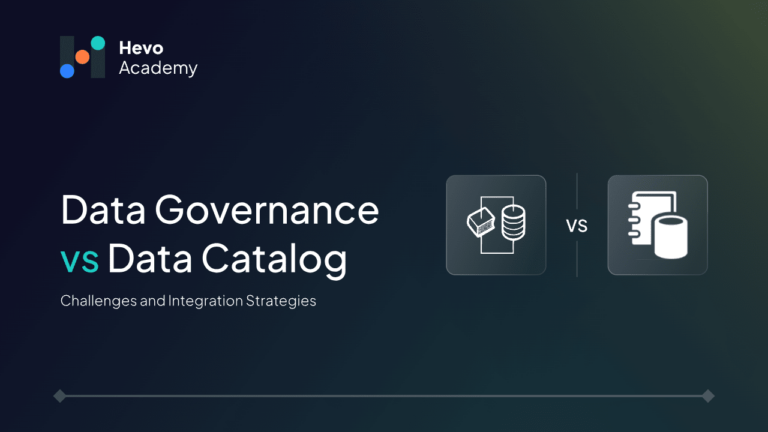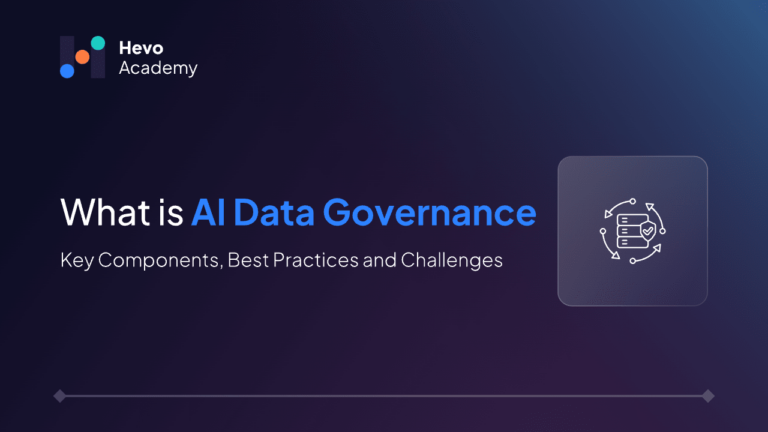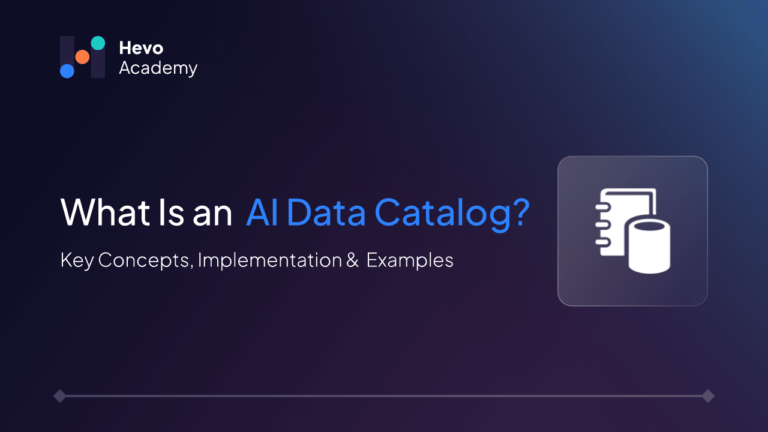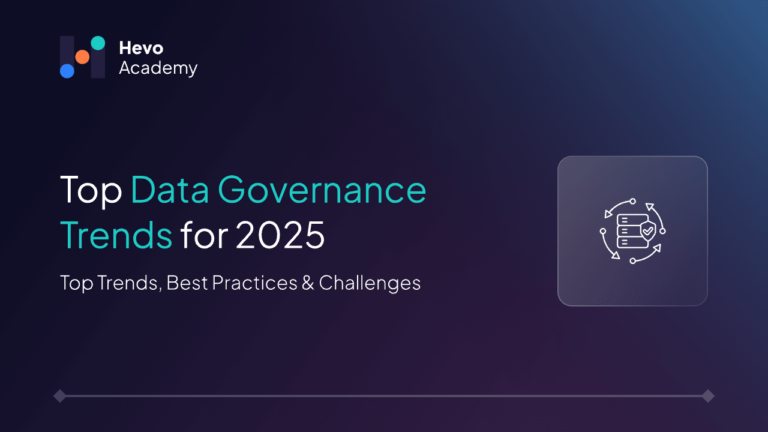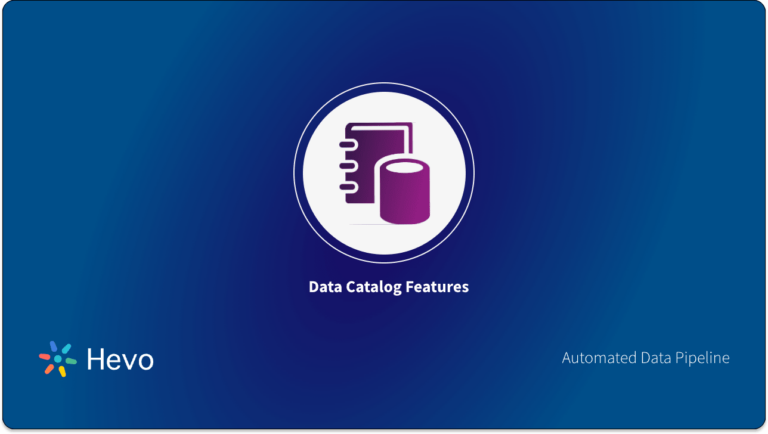Data is only valuable when it is well-governed, accessible, and trustworthy. However, organizations struggle with data visibility and control; 77% report data quality issues, while 91% say poor data management impacts business performance (Data Quality Crisis). This indicates the significance of effective data governance and catalogs in modern enterprises.
Table of Contents
Data governance establishes policies, security, and compliance frameworks to maintain data integrity, while a data catalog structures and classifies data assets to make them discoverable and usable. However distinct, they have worked together to enable trusted, well-managed data management strategies. This blog explores data governance vs data catalog key differences, how they complement each other, and best practices for seamless integration.
What is Data Governance?
Businesses use data governance frameworks to determine the management structure, security protocols, and utilization practices of data. Governance defines both the policies and roles. Also, it sets compliance requirements that maintain accurate data and safe accessibility and security.
The increasing quantity of business data requires operational governance to protect against data errors, security breaches, and regulatory non-compliance. The implementation of governance provides organizations with dependable, high-quality data that facilitates analytical activities and business intelligence. Organizations without governance face serious issues, such as data silos and poor decision-making, which create both financial and reputational damages.
Why is Data Governance Important?
- Ensures Data Accuracy – Reduces errors and inconsistencies.
- Enhances Security & Compliance – Prevents breaches and meets GDPR and HIPAA regulations.
- Improves Decision-Making – Provides reliable, well-structured data.
- Breaks Down Data Silos – Enables seamless data sharing across departments.
- Supports AI & Automation – Ensures high-quality data for machine learning.
What is a Data Catalog?
A data catalog is an organized, searchable collection of business data assets to boost discovery capabilities and improve accessibility and governance functions. Through metadata evaluation, automation processes, and data lineage technologies, the system arranges multiple sources of structured and unstructured information so users can find and understand available datasets.
Data catalog integration with governance frameworks ensures data security and compliance with proper management standards. Decision-makers, analysts, and engineers benefit from a self-service platform to access high-quality, trusted data that upholds regulatory compliance.
Benefits of a Data Catalog
- Faster Data Discovery – Provides instant, searchable access to relevant datasets.
- Stronger Data Governance – Ensures compliance with security policies and regulatory standards.
- Improved Efficiency – Minimizes time spent searching, preparing, and validating data.
- Enhanced Data Trust – Tracks data lineage, ownership, and quality metrics for greater reliability.
Key Differences Between Data Governance vs Data Catalog
| Aspect | Data Governance | Data Catalog |
| Purpose | Defines policies, security, and compliance controls. | Organizes and indexes data for easy discovery. |
| Focus | Ensures data quality, privacy, and lifecycle management. | Enhances data accessibility and usability. |
| Function | Enforces governance rules, access controls, and compliance. | Provides metadata, search, and lineage tracking. |
| Users | IT teams, compliance officers, and data stewards. | Analysts, engineers, and business users. |
| Scope | It covers privacy, ownership, retention, and security. | Manages inventory, tagging, and classification. |
| Integration | Works with compliance and security tools. | Connects to BI, analytics, and governance tools. |
| Outcome | Ensures reliable, compliant, high-quality data. | Enables faster discovery and self-service analytics. |
Detailed Differences Between Data Governance and Data Catalog
1. Purpose
- The organization implements data governance tools that establish policies and create controls for maintaining data security that achieve operational compliance.
- Data catalog operates as a metadata-driven directory that organizes data resources for better identification and accessibility purposes.
2. Focus
- Data governance implements security measures while enforcing both regulatory compliance and ownership policies to protect data usage from ethical and lawful violations.
- The data catalog tool enables users to access relevant datasets effectively through its fully searchable and accessible system.
3. Functionality
- Data governance maintains regulatory standards by deploying role-based access control (RBAC) in addition to compliance enforcement, lifecycle management, and audit tracking features.
- The data catalog system delivers automated capabilities that simplify metadata management, allow users to track data streams, and provide fast search functionality.
4. Users & Roles
- The four main groups employing data governance are compliance officers, data stewards, IT administrators, and legal teams.
- data catalog enables quick data access to users among data analysts as well as engineers, business professionals, and AI/ML teams seeking organized, structured content.
5. Scope of Influence
- Data governance manages enterprise-wide privacy regulations (GDPR, CCPA) along with security controls. It oversees enterprise data quality, establishes data standards, and implements risk management protocols.
- The data catalog system enhances metadata through enrichment methods and provides classification tools while creating dataset indexes alongside visualization.
6. Integration & Automation
- The integration of data governance with compliance tools along with IAM (Identity & Access Management) security frameworks and data quality platforms enhances monitoring and control of data usage.
- Data catalog enhances metadata tracking by linking with BI tools, ETL pipelines, cloud data lakes, relational databases, and governance systems.
7. Outcome & Business Impact
- Data governance creates high-quality, non-compliant data that eliminates risks to enable both proper decision-making and regulatory compliance.
- Through data catalog, organizations achieve faster self-service analytics and better search capabilities and gain enhanced team-wide data access.
How Data Catalogs Enhance Data Governance?
1. Automated Metadata Management
Data catalogs perform metadata enrichment in real-time by capturing and tagging structured and unstructured sources through classification. By implementing this system, organizations improve their data traceability and maintain data governance policy adherence.
2. Role-Based Access & Policy Enforcement
Role-based permission enforcement through Identity and Access Management (IAM) systems integration enables data catalogs to control sensitive data accessibility for authorized users. Data catalogs enable organizations to meet requirements under GDPR, HIPAA, and CCPA.
3. Real-Time Data Lineage & Auditing
A data catalog system records complete data lineage information, which describes how data transforms between different stages. The solution enhances audit capability while simplifying impact analysis and regulatory reporting, which reduces compliance challenges.
4. Integration with Governance Frameworks
The interface between data catalogs and master data management platforms creates a unified, governed storage system for enterprise data assets, which improves data discovery and security.
Integrating data catalogs with governance frameworks helps businesses ensure compliance while improving security and building trust in their data assets.
Challenges of Integrating Data Governance With Catalog
- Inconsistent Metadata Standards – Different systems use varying metadata formats, making governance alignment complex and requiring standardization efforts.
- Siloed Governance Policies – Disconnected governance frameworks lead to inconsistent data access controls and compliance enforcement across business units.
- Complex Policy Automation – Translating governance rules into automated security and access controls demands advanced integration and system compatibility.
- Scalability Issues – Large-scale data ecosystems introduce performance bottlenecks, making governance enforcement and catalog updates resource-intensive.
- Data Lineage Gaps – Without complete end-to-end lineage tracking, enforcing governance policies across all data assets becomes unreliable.
- Access Control Challenges – Role-based policies may not be uniformly enforced across hybrid and multi-cloud environments, increasing security risks.
- Regulatory Compliance Risks – Failure to properly integrate compliance policies into data catalogs can lead to legal and regulatory exposure.
Best Practices for Integrating Governance and Catalog
Integrating data governance with data catalogs requires a structured, scalable, and automated approach to ensure compliance, security, and efficiency across data ecosystems. Below are best practices to establish a seamless and well-regulated integration.
1. Establish a Unified Metadata Management Framework
A harmonized metadata architecture prevents inconsistencies between governance policies and catalog metadata. Implementing AI-driven metadata extraction, enrichment, and tagging enhances data classification, discoverability, and compliance tracking. A centralized metadata repository ensures that governance rules are consistently applied across all datasets.
2. Automate Data Lineage and Regulatory Compliance Tracking
AI-powered data lineage tracking maps data movement, transformations, and dependencies in real time, ensuring transparency in ETL workflows, audit trails, and governance enforcement. Compliance with GDPR, HIPAA, and CCPA is strengthened by embedding automated, rule-based access controls within the data catalog.
3. Implement Fine-Grained Role-Based Access Control (RBAC) and Data Masking
Align Identity and Access Management (IAM) systems with RBAC, Attribute-Based Access Control (ABAC), and Dynamic Data Masking (DDM) to prevent unauthorized access to sensitive datasets. This ensures governance compliance while maintaining granular control over data security.
4. Enable Policy-Driven Data Discovery with Governance Oversight
Governance-aware data catalogs should enforce policy-driven access requests, automated approval workflows, and audit logging to ensure real-time data discovery while maintaining security and compliance. Self-service access should be managed through usage-based access policies to prevent governance violations while still enabling data democratization.
5. Integrate Data Catalogs with BI, ETL, and Governance Platforms
A fully governed data ecosystem requires data catalogs to integrate with BI tools (Tableau, Power BI), ETL pipelines, Master Data Management (MDM) systems, and governance frameworks. This integration ensures consistent data quality, traceability, and policy enforcement throughout the data lifecycle.
6. Leverage AI for Continuous Monitoring and Anomaly Detection
AI and machine learning-based observability can identify anomalies, detect policy violations, and optimize governance frameworks. AI-driven data quality scoring, metadata validation, and real-time alerts help maintain compliance by flagging inconsistencies, unauthorized access, or security risks within the catalog.
By following these best practices, organizations can harmonize governance and data cataloging efforts, ensuring a secure, compliant, well-orchestrated data infrastructure supporting self-service analytics, AI applications, and regulatory reporting.
Conclusion
Data without governance is chaotic, and governance without accessibility is ineffective. The integration of data governance and data catalogs transforms uncertain data systems into safe and reliable operational units. Governance enforces trust, security, and compliance, while catalogs make data discoverable, contextual, and actionable together, they create a foundation for data-driven innovation.
The implementation of intelligent metadata management systems with AI-based policy automation and seamless integration across departments will help organizations break down silos while ensuring regulatory compliance and enabling real-time analytical capability. Such forward-thinking approaches enable data control, which advances into strategic business growth by leveraging organizational data. For seamless data integration, try Hevo. Sign up for a 14-day free trial and get to know more.
FAQs
1. What are the 5 C’s of data governance?
According to data governance principles, there are five key elements: Compliance, Control, Consistency, Completeness, and Connectivity. The principles create a regulatory framework that standardizes data management to achieve quality results.
2. What is a data catalog?
A data catalog functions as an organized database of data assets, which enables metadata management and lineage tracking alongside search functionalities. The data catalog system enables users to discover and categorize data effectively and to control usage while securing accessibility across diverse data repositories.
3. What is data governance with an example?
Data governance operates as a management system that establishes rules for data ownership together with compliance standards for data usage. A healthcare provider uses governance to limit patient data accessibility through HIPAA regulations, which allow authorized medical staff to review sensitive records.
4. Is Microsoft Purview a data catalog?
Yes, Microsoft Purview functions as a single platform for unified data governance, which provides features such as data cataloging and lineage tracking, as well as policy enforcement capabilities. The platform helps organizations find and classify their data throughout multi-cloud and hybrid systems while preserving both security protocols and regulatory needs.

